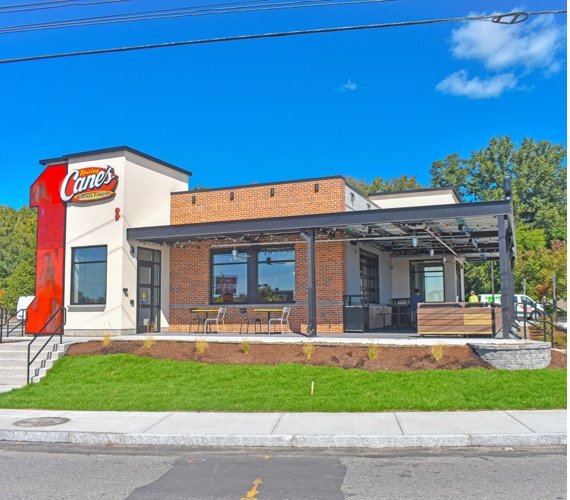News: Retail
Posted: April 23, 2015
Question of the Month: How do I optimize the identification rules for my 1031 Exchange?
A long, long time ago, there were no identification requirements and no identification deadlines. It was an uncertain era. But then the taxpayer won, and the IRS lost in Starker v. U.S., 602 F.2d 1341 (1979), before the 9th Circuit Court of Appeals, and the like-kind exchange world changed forever. Delayed, non-simultaneous exchanges were now "officially" permissible under Section 1031. However, Starker involved a multi-year exchange with no replacement property identified in the exchange agreement, which prompted congress to amend Section 1031 by adding subsection 1031(a)(3), which created the identification requirement, its 45-day deadline, and the overall 180-day limitation on the exchange period. The history lesson is now concluded, so let's switch our focus to considering the best ways to deal with these rules in the present real estate market.
Today's real estate market is very active, with many markets experiencing a significant increase in value. Here are some ideas on how to deal with that reality and the restrictive nature of the 1031 identification rules.
Plan ahead - If you think that you want to sell your property, immediately start looking for what you might want to buy with the exchange proceeds. The 45-day identification period will pass by in a flash. Investigate the market you want to buy in before you sell and put a strategy together. Advance preparation can ensure success.
Understand the rules - Although counting the days in the 45-day deadline is easy, adhering to the rules, which limit the number of properties you can identify, may not be as easy. The identification rules, which are in the regulations, are undeniably complicated and provide several ways to comply. The first and simplest rule is the "3-property" rule. You can identify up to three properties per exchange, not per property sold. This is a very important distinction. The 3-property rule works well for many simple or one property exchanges. Large portfolio exchanges will often struggle with this rule or find it simply unworkable. The other rules offer better options for more complex exchanges.
The second rule, the "200% rule," allows you to identify any number of properties so long as their total fair market value (FMV) as of the end of the identification period does not exceed 200% of the total FMV of the relinquished properties on their date of sale. By using FMV rather than a prescribed number, this rule allows the taxpayer more flexibility whether buying and selling multiple properties or selling one large property and buying a number of smaller properties.
The third rule, the "95% rule," is very important since the consequence of identifying more properties than is allowed under the two previous rules is that the taxpayer is treated as if no property was identified. This rule may allow you to escape the draconian result of potentially disqualifying your entire exchange through over-identification. The 95% rule enables any number of replacement properties to be considered properly identified, provided the taxpayer acquires replacement properties the FMV of which is at least 95% of that of all the identified properties.
A special rule applies to any replacement property, regardless of the number or values of such properties, which you receive before the end of the identification period. These properties are "deemed" to be identified, even though they were not formally identified through a proper written identification. This rule also has ramifications for the other three rules: if a taxpayer acquires replacement property before the end of the 45-day period without making a written identification, that "deemed identified" replacement property counts against the satisfaction of the three basic rules. So, depending upon the circumstances of your exchange, all your acquired property, whether or not formally identified, may count against the three identification rules.
Identifying the property - The description is key to satisfying the identification rules. The rules provide that the property must be unambiguously described. Real property is generally unambiguously described if it is described by a legal description, street address, or distinguishable name. For example, the "Empire State Building, New York, New York" should suffice. But for other less well known properties, a street address and/or legal description are the safest route. Be careful if using only a street address, as it is quite easy to transpose the numbers in a street address, with the result that you have unintentionally identified a completely different property.
To simplify matters, if you are acquiring a building with personal property, such as an apartment building with lobby furniture, washers, and dryers, those properties are considered part of the apartment building so long as that property is typically transferred with the real property, and the total FMV of the personal property does not exceed 15% of the FMV of the building. If those requirements are met, the personal property need not be identified separately, and it is permissible to simply identify the building by itself.
Revoking the identification - If you change your mind about the property you want to acquire, or if someone else buys the property you want before the end of the identification period, you can revoke or amend your previous identifications up until midnight on the 45th day after the sale of your first property sold in the exchange. Do not hesitate to use this technique to keep your options open and stay in the 1031 exchange game!
Kelly Alton is executive vice president, general counsel for NES Financial Corp., San Jose, CA.
Tags:
Retail
MORE FROM Retail
Mace of KeyPoint Partners negotiates 36,192 s/f lease for The Picklr at Endicott Square
Danvers, MA KeyPoint Partners (KPP) negotiated a lease with the nation’s premier indoor pickleball venue The Picklr at Endicott Sq. Vice president of retail brokerage Don Mace negotiated the transaction on behalf of the landlord.

Quick Hits




.jpg)


